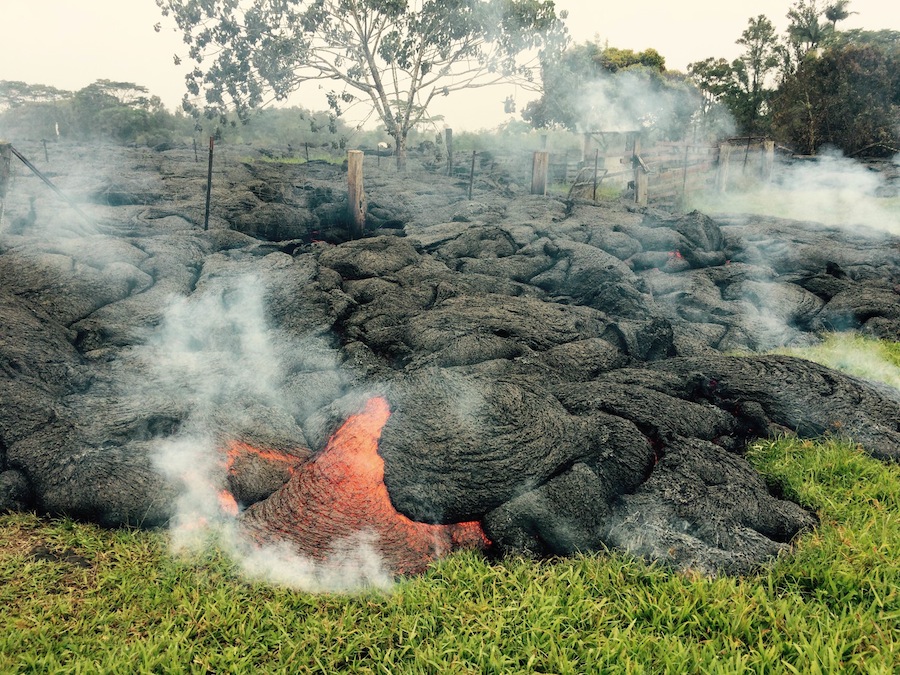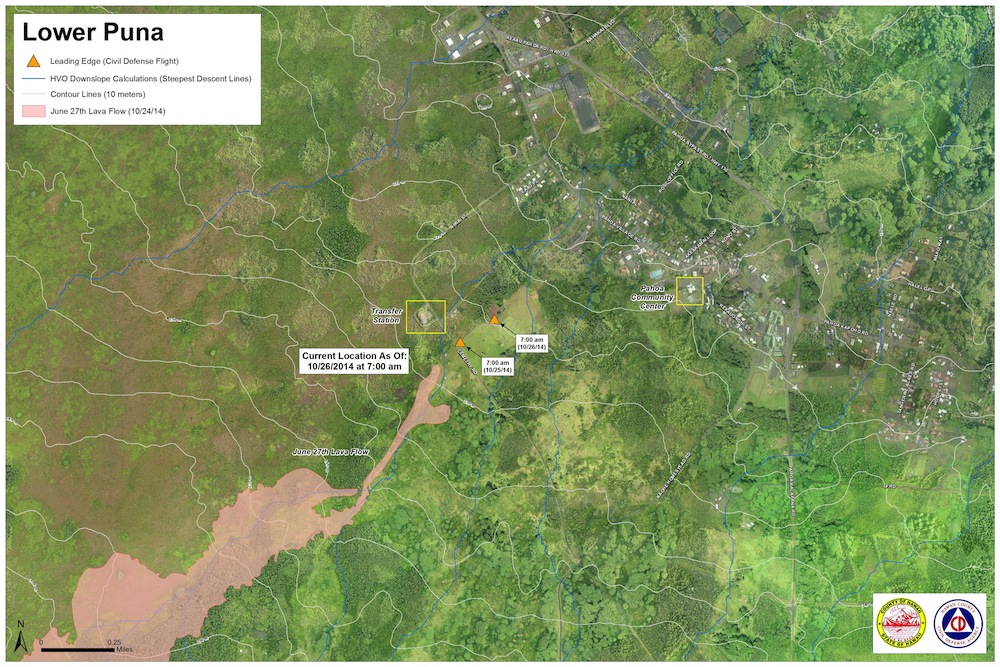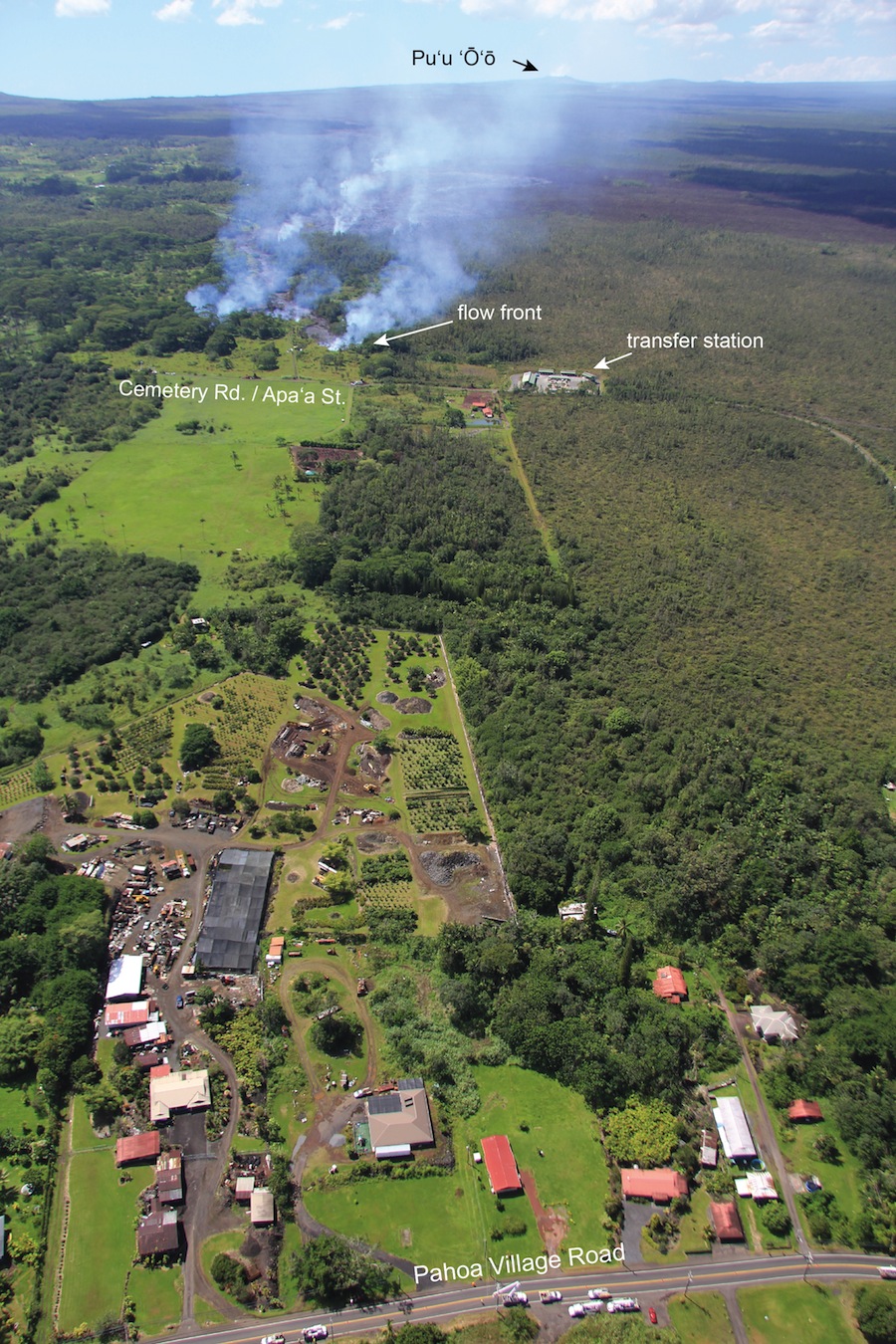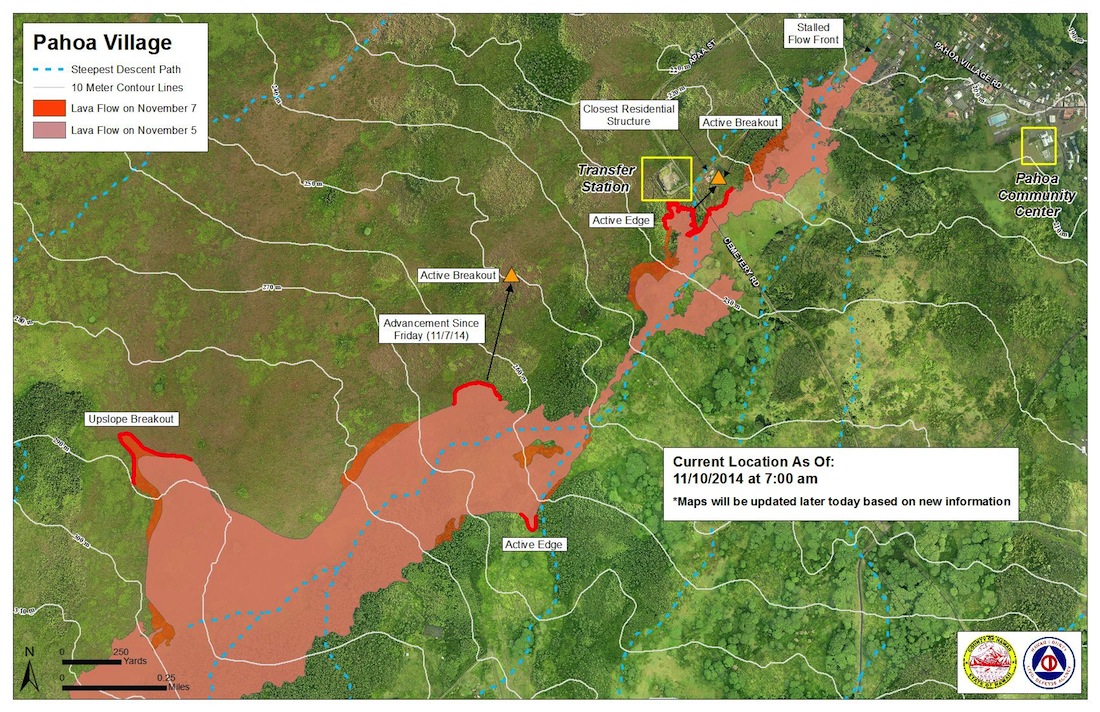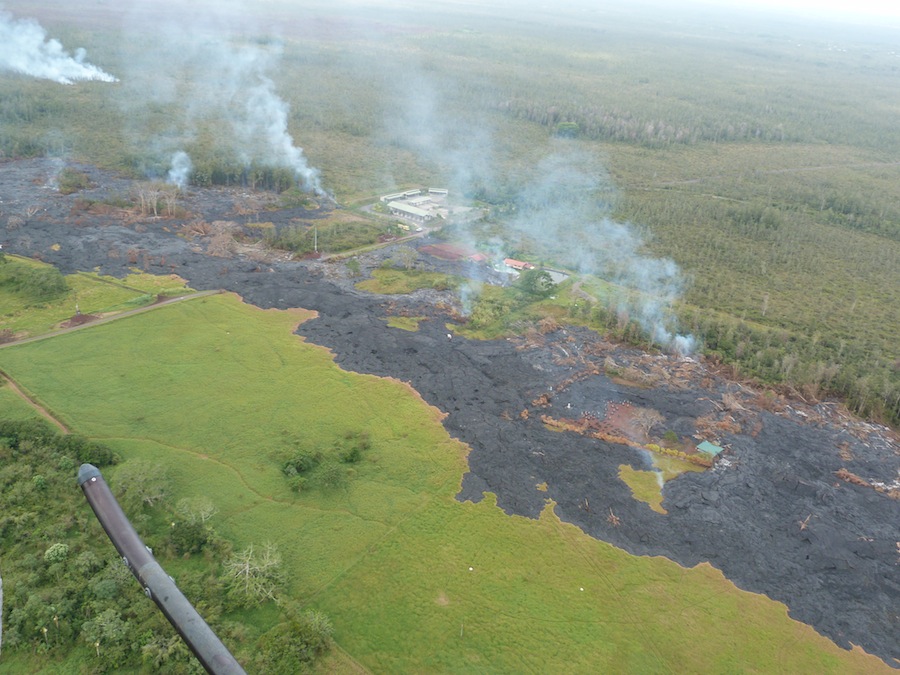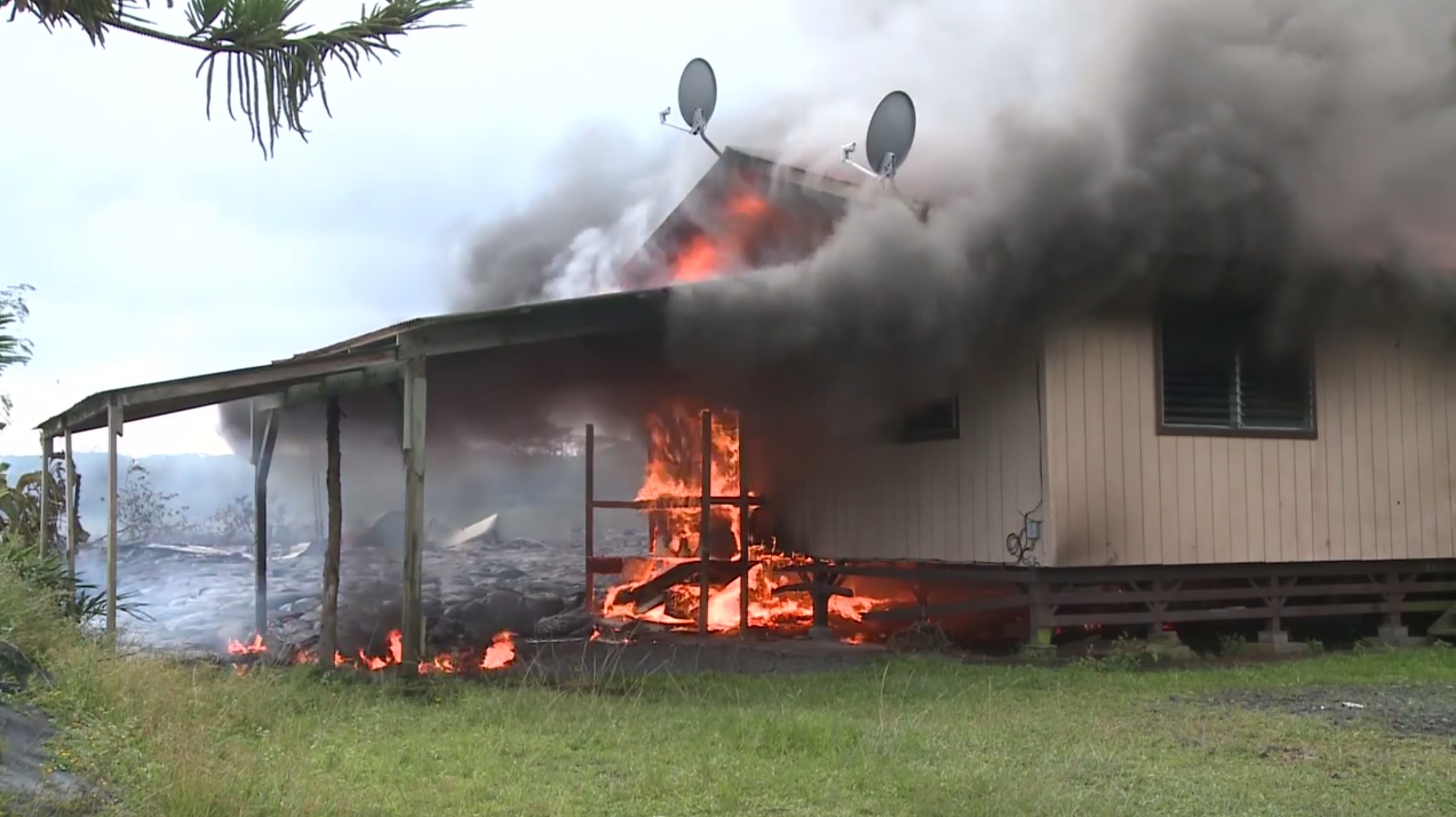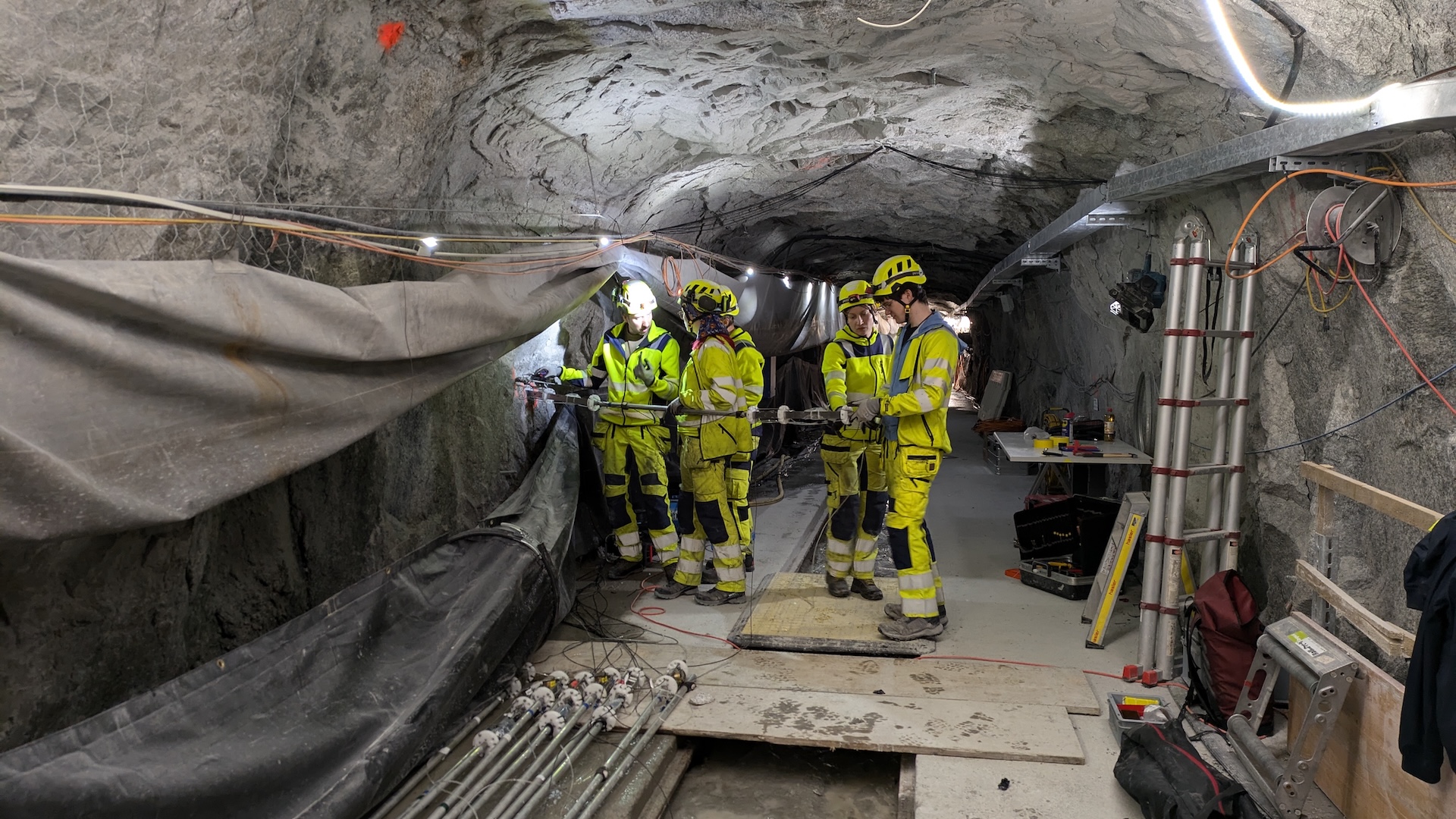Photos: Lava Flows from Hawaii's Kilauea Volcano
Hawaii's Kilauea volcano has been erupting for more than 30 years. A new stream of lava started flowing on June 27, 2014. By the fall, the molten rock was pushing close to homes and buildings in the town of Pahoa, in the eastern part of Hawaii's Big Island. On Nov. 10, the lava flow consumed its first home. [Read the latest update here]
Hot lava pressing on
By Oct. 26, one section of the stream of molten rock was moving through an open field, shown here, while a faster-moving tip of the lava flow had advanced through the Pahoa cemetery. The same day, local officials and emergency responders started alerting residents to prepare for a possible evacuation. (Credit: USGS/Hawaiian Volcano Observatory)
Lava rising
Threatening utilities
This part of the flow covered up the short access road to the cemetery. Some areas of the lava stream had inflated to chest-high depths as fresh lava accumulated under the hard crust, slowly raising the surface. (Credit: USGS/Hawaiian Volcano Observatory)
The lava that moved over the cemetery road surrounded a utility pole. The pole was still standing as of Oct. 25, and officials hoped its insulation and cement barrier would prevent it from burning. The glowing edges of the lava flow can reach temperatures higher than 1,650 degrees Fahrenheit (900 degrees Celsius), according to the Hawaiian Volcano Observatory. (Credit: USGS/Hawaiian Volcano Observatory)
Get the world’s most fascinating discoveries delivered straight to your inbox.
Lava extent on Oct. 26
This map shows where the June 27th lava flow had reached as of the early morning on Oct. 26. (Credit: Hawaiian Civil Defense Agency)
Warped shed
Cracks and fissures in Kilauea have been spewing lava non-stop since 1983. During that time, about 200 structures have been destroyed. The June 27th lava flow originated from a vent in Kilauea's Pu'u O'o crater. Shown here, a small shed was consumed by lava in the pasture near the Pahoa cemetery. (Credit: USGS/Hawaiian Volcano Observatory)
From above
This picture was taken on Oct. 24. At the time, the tip of the lava flow was (0.7 miles 1.2 kilometers) from Pahoa Village Road. By the night of Oct. 26, the flow was just 600 yards (550 m) from the road. Authorities closed a portion of the street. An arrow in the background of this photo points out the location of Pu'u O'o. (Credit: USGS/Hawaiian Volcano Observatory)
Lava extent on Nov. 10
As of Nov. 10 at 7:00 am local time, the front edge of the lava flow was still stalled a few hundred feet from Pahoa Village Road, but active lava breakouts continued to burn. (Credit: Hawaiian Civil Defense Agency)
Burning from above
This aerial image shows plumes of smoke rising from active streams of lava that have broken off the main flow. (Credit: USGS/Hawaiian Volcano Observatory)
Lava at the doorstep
On Nov. 10, the lava flow overran and empty house. In this helicopter view, you can see the, home (with a reddish roof) before it went up in flames.
Burning home
The house went on fire at 11:55 a.m. local time on Nov. 10. It was the first home to be consumed by the June 27th lava flow, but hardly the first to be destroyed by Kilauea's 30-year eruption. (Credit: YouTube/Star-Advertiser)

